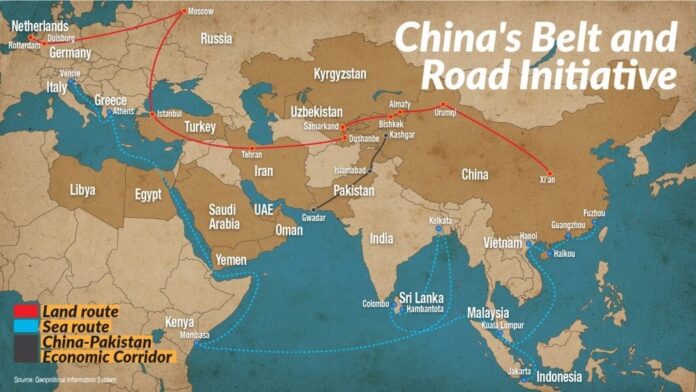Massive lending by Chinese financial institutions for the Belt and Road Initiative (BRI) are driving China towards its first overseas debt crisis while a pullback threatens to deliver a blow to the funding gap structure which only in Asia stands at $907 a year, a report by the Financial Times said on Saturday.
The report mentions that China has promised to spend about $1tn on building infrastructure in mainly developing countries around the world — and finance almost all of this through its own financial institutions.
According to data published by researchers at Boston University, who maintain an independent database on China’s overseas development finance, lending by the China Development Bank and the Export-Import Bank of China collapsed from a peak of $75bn in 2016 to just $4bn in 2019.
“Between 2008 and 2019, the two Chinese state-owned banks lent $462bn, just short of the $467bn extended by the World Bank, according to the Boston University data. In some years, lending by the Chinese policy banks was almost equivalent to that by all six of the world’s multilateral financial institutions put together,” the report says.
Such sharp scaling back of lending by the Chinese banks, if it persists, it will exacerbate an infrastructure funding gap, especially in Asia where Chinese credit has also formed a big part of infrastructure financing.
Quoting Hong Kong university Finance Professor Chen Zhiwu, the reports states that retrenchment in Chinese banks’ overseas lending is part of a bigger picture of China cutting back on outbound investments and focusing more resources domestically, in addition to being a response to Sino-US tensions during Donald trump’s presidency.
Further, Beijing has now adopted a “dual circulation” policy which would pursue more lending through multilateral bodies such as the Asian Infrastructure Investment Bank while Chinese financial institutions may also cooperate more with international lending agencies.
Moreover, the report adds that debt renegotiations have proliferated as the pandemic has clobbered emerging economies in Africa and elsewhere.
A report by Rhodium Group, a consultancy, says at least 18 processes of debt renegotiation with China have taken place in 2020 and 12 countries were still in talks with Beijing as of the end of September, covering $28bn in Chinese loans.
“So far, Beijing appears keen to pursue a soft touch, deferring interest payments and rescheduling loans. But the experience is reinforcing a growing sense of wariness that now infuses Mr Xi’s big project. If China is unable or unwilling to provide sufficient relief to its borrowers, it could find itself at the centre of a debt crisis in developing markets,” the report concludes.




